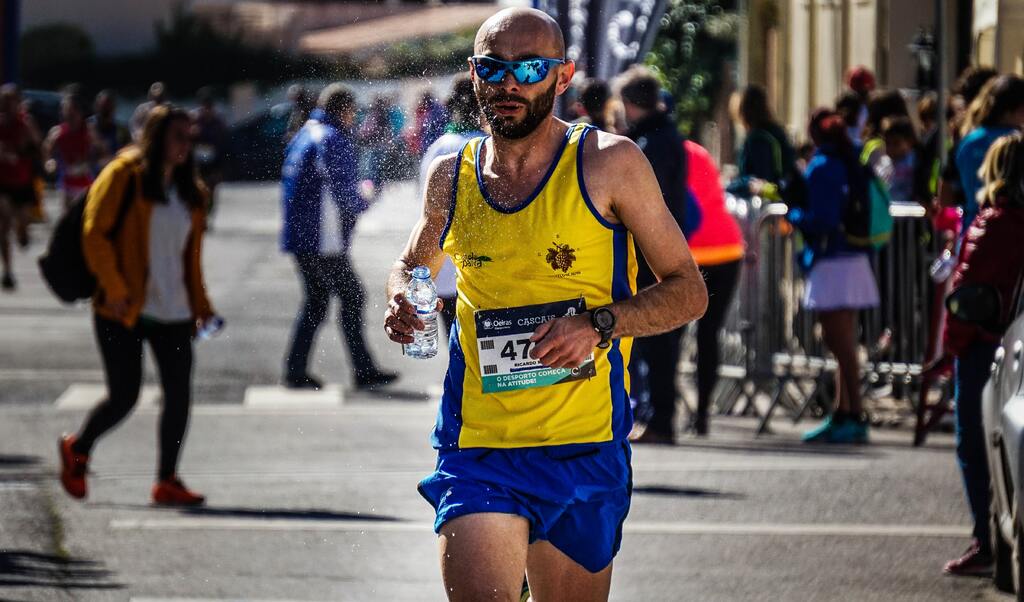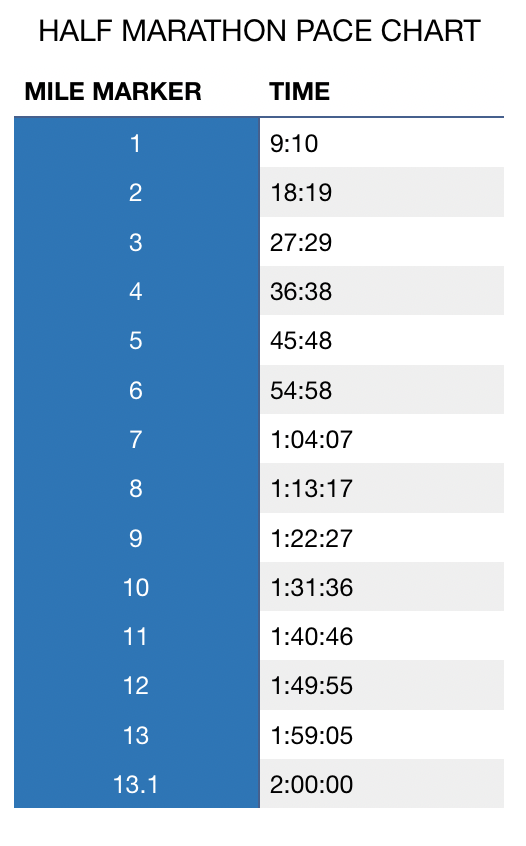How to Run a 2 Hour Half Marathon (Pace Chart Included)

Start your training by building a strong aerobic base. Gradually increase your weekly mileage to develop endurance. Incorporate long runs into your training regimen to build stamina.
Are you looking to run a sub 2-hour half marathon? While the half marathon distance is nothing to attempt without proper training, if you seek advice and assistance, you have come to the right place!
We will set you up with some training plans, tips, and nutrition advice. All you have to do is “do the work” and show up on race day.
What Pace is a 2-Hour Half Marathon?
Half-marathon runners gunning for a two-hour half-marathon finish need an average pace of 9:09 per mile.
Getting under that two-hour mark can be done, but there are a lot of things to consider to determine if you are ready to attempt that feat.
How Do You Know If You’re Ready to Attempt a Sub-2 Hour Half Marathon?
- Experience: Ideally, if you are looking to train for a fast half marathon, you have running experience. Having said that, some people are anomalies and can jump into training and run very fast.
- Current Fitness Level: Besides running, you will want to do other workouts to get to the starting line healthy. That will include strength training, cross-training, dedicated core work, etc.
- Race Times: You may be ready to attempt a sub 2-hour half marathon if you can run a 5K in around 25 minutes (or less) and a 10K in 54 minutes. If you have run a few half marathons and your half marathon times vacillate between 2:04 – 2:15, it is the perfect time to get yourself a running coach and dig into some serious training.
- Long Runs: Another gauge of readiness is having the ability to run 90 minutes. This is a step toward handling the training runs necessary for a half.
- Tempo Runs at Goal Pace: When doing your training runs, you must determine the pace needed to meet your time goal. Can you maintain that pace on tempo runs?
- Time to Dedicate: You can’t skimp on training if you have set this lofty half-marathon goal. It may not be the right time for you if you are at a super busy stage of your life.
Training Plans
One of the biggest names in the running is Hal Higdon. Hal has half marathon training plans for novice runners (two levels), intermediate runners (two levels), and advanced runners. When choosing a plan, it is best to be honest with yourself about your experience and fitness level. Find a plan that matches best with you.
The Boston Athletic Association (BAA) has three levels of half marathon training plans, depending on your experience and expectations for yourself. Their page comes complete with goal paces for different race distances. All averages are mile paces but can easily be converted to kilometers if you prefer.
Nike Running has half marathon plans that come with guided runs. The Nike coaches talk to the athlete during the workout. Many people find that motivating and helpful. I find the Nike app plans to be more conducive to beginner runners.

What Will Be in the Plan?
- Long Runs: Long runs should be done as easy runs. Most athletes do not run long runs slowly and at an easy pace.
- Tempo Runs: A tempo run is a continuous run at a sustained effort. It usually includes a very intentional warm-up portion of the run, a set number of miles at the goal pace, and then a cool down.
- Speed Workouts: It is essential to get speed work in. Depending on the workout, this can be done on the track or road. Mile repeats, for example, can easily be done on a stretch of road. Shorter speed work may be more conducive to running on a track.
- Strength Training: Lifting weights can help you grow stronger, as well as hold injuries at bay.
- Cross Training: Depending on how many days each week you choose to run, non-impact cross-training is an excellent way to work on cardiovascular fitness without risking injury by pounding the pavement too much.
- Core Work: Having a strong midsection is crucial to runners. Planks, bridges, and other core work will help get you to the finish line feeling strong.
- Rest Days: Honor the rest day. You need to recuperate as badly as you need to work out.
- Weekly Mileage: In addition to precise workouts, you will build your weekly mileage. The rule of thumb is to add at most 10-15 % each week. By race day, you will likely be running 22-30 miles per week, depending on your plan.
Fuel, Hydration & Recovery Food
The first thing a distance runner needs to go the distance is fuel. Most runners take in carbohydrates while racing a half marathon. Items made specifically for runners, like gels or chews, give athletes carbs in an easy-to-digest form. Some athletes prefer to take in natural carbs and lean on things like honey or bits of sweet potato.
Proper hydration is also a necessary component. Depending on the temperature and your body, more than water may be needed. Many racecourses offer water and electrolyte drinks like Gatorade, Nuun, or Power Aid on the course.
Post-workout recovery foods set you up for success in your future workouts. Try to take in a protein and a carb within 30 minutes of completing your activity.
Race Pace
Sure, you know your average pace needs to be 9:09 per mile or less to run a sub-two-hour half marathon. Your training should get you in the habit of running easier in the first half of the race and then picking up the pace. A negative split half marathon helps to ensure you don’t run out of gas.
If you’re feeling great on race day, don’t pick up your running pace too early, especially if this is your first half marathon. Heading into a long-distance race with a pacing strategy will set you up for success!
Half Marathon Pace Chart
Are you ready to toe the line and try to break that two-hour mark in a half-marathon race? This is where a runner needs to be at each mile marker for a two-hour half marathon pace.

Latest Articles
 Is Running on a Treadmill Easier Than Running Outside?Runners have their own preferences, whether it is treadmill running, running outside on the road, or exploring trails. So...
Is Running on a Treadmill Easier Than Running Outside?Runners have their own preferences, whether it is treadmill running, running outside on the road, or exploring trails. So... Is It OK to Use Trail Running Shoes on the Road?While trail running shoes can be used on roads, especially in situations where a runner encounters mixed terrains or pref...
Is It OK to Use Trail Running Shoes on the Road?While trail running shoes can be used on roads, especially in situations where a runner encounters mixed terrains or pref... How to Fix Sore Quads After Running?Rest, ice, gentle stretching, and over-the-counter pain relievers can help soothe sore quads after running. Also, ensure ...
How to Fix Sore Quads After Running?Rest, ice, gentle stretching, and over-the-counter pain relievers can help soothe sore quads after running. Also, ensure ... 10 Fruits With The Most Electrolytes to Replace Sports DrinksThese fruits are high in electrolytes such as potassium, magnesium, and calcium, essential for hydration, muscle function...
10 Fruits With The Most Electrolytes to Replace Sports DrinksThese fruits are high in electrolytes such as potassium, magnesium, and calcium, essential for hydration, muscle function...

